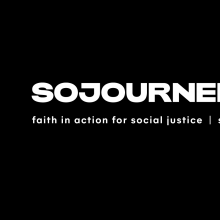movie
THE BEST CHRISTIAN MOVIE you’ve never seen (even though it was Oscar-nominated for best picture!) turns 10 this year. That movie is Philomena, adapted from The Lost Child of Philomena Lee: A Mother, Her Son and A Fifty-Year Search, by British journalist Martin Sixsmith. The film stars Dame Judi Dench as the titular mother and Steve Coogan as Sixsmith. While the book primarily focuses on Philomena’s son Michael Hess, the film more closely traces the mother’s story. As a pregnant teenager, Philomena was abandoned to a convent of nuns who forced young women to work without pay and sold their children to wealthy Americans looking to adopt.
On her son’s 50th birthday, Philomena weeps, clutching the only pictures she has of him. Despite her efforts, she has never been able to learn his fate. When Sixsmith, a disgraced journalist, learns of Philomena’s plight, he agrees to help her. What began as a distraction from his own troubles soon shifts to captivation. Despite Philomena’s assurances that the sisters of the convent have done their best to care for the women and children in their charge, Sixsmith uncovers a devilish conspiracy of silence.
IN HER POEM “Flare,” Mary Oliver writes about grief and the relationship between memory and reality, especially when it comes to parents. She writes: “My mother / was the blue wisteria, / my mother / was the mossy stream out behind the house, / my mother, alas, alas, / did not always love her life, / heavier than iron it was / as she carried it in her arms, from room to room.”
Our relationships with parents are shaped by our memories, what parents tell us about their lives, and what we come to understand about them. The Bible tells us to honor our father and mother, but we can never do that perfectly because we never fully know them. This becomes more poignant when those who raised us are no longer around.
Like Oliver’s poem, Joanna Hogg’s The Eternal Daughter (available on video on demand) captures this liminal, lonely feeling in an intensely personal way. Hogg’s semi-autobiographical film is a ghost story about memory, family, and the pull between the stories we know, the ones we don’t, and unresolved ways they differ.
THE OPENING SCENE of Holy Spider is brutal. We see a woman — a sex worker — leave her child at home to go to work. Walking through Iran’s holy city of Mashhad, she stops at a public restroom to adjust her headscarf and apply bold lipstick. She goes on her first call of the night and does some opium. As she prepares to go home, a man approaches on a motorcycle. He offers her money. She joins him. Shortly after arriving at their destination, he strangles her.
Writer-director Ali Abbasi’s Holy Spider is a fictionalized account of Saeed Hanaei, known as the Spider Killer, who targeted female sex workers in Mashhad from 2000 to 2001. The film, which premiered at the 2022 Cannes Film Festival, examines the killer’s life and the process of capturing him, led by (fictionalized) female journalist Arezoo Rahimi (Zar Amir Ebrahimi).
The new film A Beautiful Day in the Neighborhood thankfully avoids giving us a Fred Rogers biopic, one that hits rote beats that show us how Rogers grew into the saintly human we welcomed into our homes. Instead, it provides a kind of parable of the love and forgiveness and empathy that Rogers preached, one in which Rogers himself happens to feature significantly.
From Friday the 13th to Halloween, there’s nothing I love more than a great horror film that has a good twist at the end. Though they tend to follow the same predictable plot, I still enjoy the ride. Yet, there has never been a horror film that has stayed with me — until I watched Us directed by Jordan Peele. I sat in my car for 20 minutes thinking of how uneasy I felt, which I believe was the point of the film: to leave you unsettled. After watched it, I realized that Peele has not only created a haunting piece of art but has also proven to be a craftsman in the art of subversion. This film makes you question who you perceive to be the other and how that conflict manifests in our world.
If you knew that your life here on earth would be short, how would you live it? Would you try to control every aspect of it to avoid the suffering and pain you knew was coming? Would you become angry, embittered, and push people away? Or would you try to make the most of it? These questions are at the heart of Five Feet Apart, starring Cole Sprouse and Haley Lu Richardson as two kids with cystic fibrosis (CF) who fall in love. The film is actor (Jane the Virgin) and filmmaker ( My Last Days) Justin Baldoni’s feature film debut.
When I was 7 years old, my family began fostering babies. Often these kids would be placed with us after being abandoned just days after they were born. Many of them were never even given a name before their mothers left them at the hospital. When I was about 9 years old, we took in a little boy and his newborn sister. My family eventually adopted them. So, when I screened "Instant Family," starring Mark Wahlberg and Rose Byrne, so many aspects of the movie rang true: The way the foster children acted out, their desire to be with both their birth mother and their foster parents, and how other people reacted to their family. But what also rang true, and it is a story not often told, is how the kids in foster care are not solely defined by their trauma or their status as “foster kids.”
Black youth get tired of seeing negative depictions of people of their own race in movies, said Gary, who wore a yellow and brown African dress to the movie showing. “When we found out that this was going to be an epic tale that actually was written by black writers, costumes designed by black costume designers, we were just, like, ‘We have to go see it.'"
A pivotal early scene in the movie engages African cosmology and varieties of African spirituality on many levels. The viewer encounters a vibrant spiritual world from the earliest moments of the film, which draws from the cultural traditions of many real African nations by incorporating customs, clothing, languages, art, architecture, body modification styles, and combat techniques found across the continent.

Still from the movie 'The 33' / via The 33 Movie on Facebook
The 33, a dramatization of the 2010 San Jose mine collapse in Chile, has all the markings of a Hollywood tentpole film. Heartfelt, incredible true story: check. Touching human drama: check. Stirring score: check (it’s one of the last created by composer James Horner before his death in June, giving it extra poignancy). There are more lines about “not giving up” than there are tears in an Oscar acceptance speech. The 33 fits the end-of-year crowd-pleaser profile in every way.
The 33 tells the famous story of the collapse of the gold mine in Chile’s Atacama desert from three different perspectives.

Photo via YouTube / Broad Green Pictures
How do we measure our success? Matthew 6:19-21 warns us against putting our store in earthly things, which are temporary, but American capitalist culture informs us that the stuff we have — the size, the quality, and how much of it we can afford — is what determines our own worth. As Christians, we try to focus on serving God and loving our neighbors, but often it’s a moment of crisis that reveals where our values truly lie.
The film 99 Homes doesn’t include overtly religious elements, but it features that same battle at the heart of its story, a deal-with-the-devil tale set against the 2008 housing market crash. Writer-director Ramin Bahrani presents the film in an unstylized, utterly human way that explores this question from a dire perspective: how people react when everything they’ve worked hard to earn is yanked away, and they must suddenly re-evaluate their own measures of success.
LEFT BEHIND may be a soft target, but once seen, you may realize that it’s a soft target for anyone who has ever been on an airplane, seen what Nicolas Cage is capable of in Leaving Las Vegas, met a Muslim, or not been cryogenically frozen since the era when it was socially acceptable to treat people with dwarfism as punchlines.
It really is worse than most theatrically released movies—shot and edited like a political attack ad/music video mashup, written like a child’s Sunday school lesson, and then strangely denuded of almost anything that would make it identifiably Christian (teasing those who already believe, yet scared of alienating people who just want to see a cheesy disaster movie without heavy proselytization).
The people who made it aren’t bad people, of course. (I’m not sure anyone is, with the line between good and evil running through each human heart and all—although that’s another argument that wouldn’t make it into this film.) The producers are ideologically committed to advancing a message that they were indoctrinated into by an unthinking system—let’s call it the Christian Industrial Entertainment Complex. They’ve stumbled upon the money and basic skill to make movies. They think that what they’re doing is changing the world for the better, but that’s doubtful—it’s more likely just reinforcing the closed-set worldview of the CIEC’s pre-committed adherents. This isn’t new, so I’m not too concerned about one more example of bad art masquerading as religious experience.
AS THIS IS written, the big, fat Hollywood blockbuster Noah is opening amid condemnation from some Muslims and evangelical Christians and praise from most film critics.
Today, any product that touches the Bible is bound to be perceived as another entry in the culture wars. But that doesn’t seem to be what the producers and filmmakers had in mind with Noah. After all, it’s time-tested public domain material that presents great opportunities for computer-generated imagery (CGI) special effects. Paramount, the studio that put up the $125 million production cost, mostly wanted to peel off a slice of the Christian audience that flocked to Mel Gibson’s The Passion of the Christ and the History Channel’s Bible series.
But Noah was a culture war surrogate long before Russell Crowe donned his biblical robes. That’s because the creationist organization Answers in Genesis (AiG), which runs an anti-evolution Creation Museum in northern Kentucky, has for the past few years been trying to raise money to build a theme park anchored by a Bible-sized replica of Noah’s Ark. The Creation Museum is famous for such attractions as exhibits that depict humans and dinosaurs as neighbors. You may have heard it described as the museum for people who think The Flintstones was reality TV.
It’s a big job rebuilding Noah’s ark. The makers of the movie Noah only built to about a third of the biblical dimensions and used CGI for the rest. The price tag for the one planned in Kentucky is about $73 million. Early on, the project got a surprising boost from Kentucky’s governor, Democrat Steve Beshear. You may have seen Beshear on TV recently hyping Kentucky’s rollout of the Affordable Care Act. But before that, in 2010, Beshear came in for rounds of derision when he announced that our state would give $37 million in tax breaks to the ark attraction, as an economic development measure. When—or if—completed, the park is supposed to create 900 jobs and bring $250 million into Kentucky in its first five years.
A wide-eyed 4-year-old makes a fairly convincing case for the existence of an afterlife in Heaven Is for Real. But it’s Greg Kinnear, with his characteristic affability, who just about seals the deal.
Humor infuses the film (rated PG), which opens nationwide Wednesday (April 16) and is based on the best-selling book. By focusing on the bond between father and son, the movie avoids being heavy-handed or preachy, a wise choice for a film that asserts heaven exists, based on the earnest insistence of a precocious preschooler.
Video courtesy of Sony Pictures Entertainment via YouTube
From the opening scene to its closing postscript, God’s Not Dead tells a story of persecution and courage, focusing on a young white man named Josh Wheaton (Shane Harper). “Mr. Wheaton,” as he is referred to in various parts of the movie, finds himself in a predicament on the first day of his Philosophy 150 course. In a scene that echoes Rome’s historic persecution of Christians, the powerful intellectual Professor Jeffrey Radisson (Kevin Sorbo) stands before his class of impressionable students and tells them they can skip the section of the course that discusses the existence of god, if each of them signs a piece of paper that says “god is dead.” The professor makes it clear that this proposal is more of a threat when he slowly and emphatically informs his students that the section on god’s existence is where “students have traditionally received their lowest grades of the semester.” This is Mr. Wheaton’s unexpected predicament: can he sign a piece of paper that proclaims god, as a philosophical category and concept, is dead? And if he decides not to sign that paper, can he have the courage to face the consequences?
I’ll begin by cutting to the chase: Forget most of what you’ve read about Darren Aronofsky’s new film, Noah. It opens Friday. Go see it and decide for yourself.
Having said that, in my opinion Aronofksy’s Noah is a beautiful, powerful, difficult film worthy of the “epic” label. A vivid, visually spectacular reimagining of an ancient story held as sacred by all three Abrahamic religious traditions, it also is the most spiritually nuanced, exquisitely articulated exploration of the ideas of justice and mercy I’ve ever seen on a movie screen.
And despite what you may have heard elsewhere, Noah is deeply, passionately biblical.
With the release of the movie Noah a couple of weeks away, the waters of controversy are already rising fast. I’ve seen the movie’s final cut, and director Darren Aronofsky’s re-envisioning of the biblical hero Noah will not disappoint — inciting some and enthralling others. Some will undoubtedly chastise him for the ways in which the movie riffs on the biblical account of Noah. Others will praise Aronofsky for his creative vision.
But the big question generated by a film like Noah is: When the Bible is the source of inspiration for art, how close does the artist have to stay to the original narrative? The Bible has been the inspiration for profound works of art for centuries. It isn’t surprising. The Bible is full of passion, romance, intrigue, struggle, and the triumph of good over evil.
Even so, it is hard to ignore the reality that not all art inspired by the Bible is respectful of its subject matter. Where, then, should the line be drawn between artistic interpretation and blatant disrespect?
















